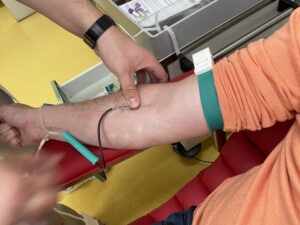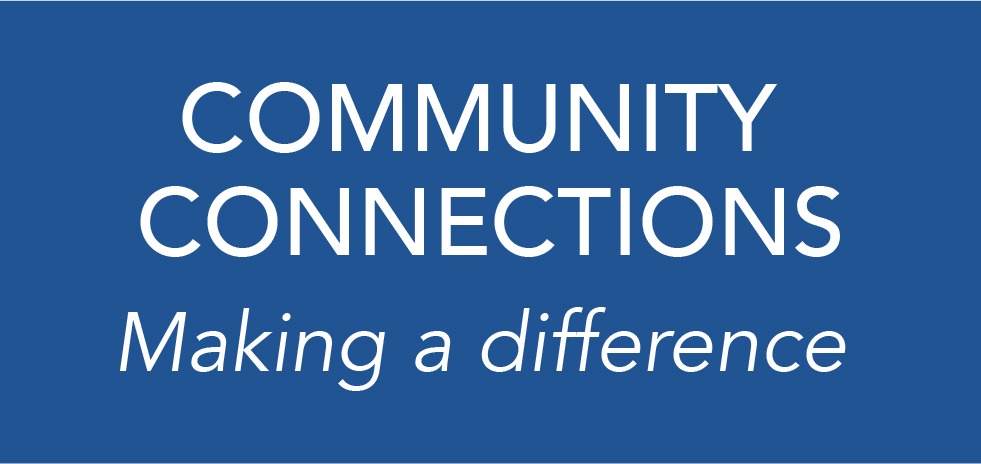In 2020, nearly 9.5 million adults ages 50 and older were food-insecure. Five million of them were 60 or older. The Supplemental Nutrition Assistance Program (SNAP) is the nation’s largest anti-hunger program and provides financial assistance to many low-income and food-insecure individuals and families to help buy the food they need.

Yet eligible older adults have historically had much lower participation in SNAP than those in other age groups, even as nutrition has an important role in healthy aging and SNAP enrollment among older adults is associated with fewer hospital and emergency room visits and long-term care admissions.
A series of three AARP Public Policy Institute and Mathematica Spotlight reports analyzing SNAP participation among older adults and the policies that affect it.
The first report, Participation: Who Are the Eligible but un-enrolled?, uses quantitative data to better understand the characteristics of older adults who are eligible but are not enrolling in SNAP. The second, Access: Who Are the Low-Income and un-enrolled? A State-Level Look examines the SNAP access rate (the share of lower-income people receiving SNAP) and the extent to which the program reaches individuals in need. The third and final report, Solutions: State Policies Associated with Higher Participation, identifies relationships between certain state SNAP policies and the SNAP participation rate among adults ages 60 and older.
All three Spotlight reports conclude with actionable implications for policy.
About the data: Each report reflects data from 2018, and the economic conditions have changed significantly since then due to the pandemic’s economic disruptions and heightened inflation. Nevertheless, this analysis contributes to a greater understanding of older adults who are not participating in SNAP and points to potential reasons for their lack of participation.
Spotlight I – Participation: Who Are the Eligible but un-enrolled?
Qualitative research has identified common reasons for low participation in SNAP, such as a confusing and burdensome application process, stigma, and discomfort with technology, yet little is known about the characteristics of eligible older nonparticipants. This quantitative analysis assesses the economic and demographic characteristics of adults ages 50 and up who are likely to be eligible but not participate in the program.
Key Findings
- In the fiscal year 2018, 16 million (or 63 percent of) adults ages 50 and older who were eligible for SNAP did not participate in the program.
- Eligible older adults ages 60 and older had especially low levels of SNAP participation.
- Most eligible nonparticipants ages 50 and older would be eligible for the minimum monthly SNAP benefit ($15 in 2018), but more than 3 million would receive more than $200.
- Eligible non-participants ages 50 and older were more likely than those under 50 to be missing out on potentially substantial SNAP benefits.
Implications for Policy and Future Research
1. SNAP outreach efforts should be targeted to those at the lowest income levels and adults ages 60 and older.
More than three million of the 16 million eligible nonparticipants live in households that could be eligible for over $200 a month in SNAP benefits. These individuals might be more motivated than people with higher incomes to participate in the program. And with 14 million of those 16 million being age 60 and older, this older age group should also be a focus of outreach.
2. SNAP processes should be streamlined.
For example, a total of 9.7 million older nonparticipants lived in households with only members ages 60 and older and no earned income; they would be eligible for a demonstration project called the Elderly Simplified Application Project (ESAP) if it were available in all states. (Other available state policies are discussed in the third report.)
3. SNAP benefits should be meaningful.
The expectation of low benefit levels is a commonly cited reason for non-participation among eligible older adults. A 2018 analysis found the average low-income meal cost $2.36, so the minimum monthly SNAP benefit of $15 in 2018 would have covered fewer than seven individual meals.
Spotlight II – Access: Who Are the Low-Income and Un-enrolled?
A State-Level Look
The SNAP access rate is defined as the share of people with household incomes less than 200 percent of the federal poverty level (FPL) who participate in SNAP. However, not all older adults with incomes below 200 percent of FPL are eligible because income limits and other eligibility criteria vary by state. This report finds substantial differences from state to state and confirms that many of the lowest-income Americans are not accessing SNAP.
Key Findings
- SNAP access rates among older adults are low but vary widely by state. Nationally, nearly one-third of low-income adults age 50 and over were enrolled in SNAP. But state access rates are influenced by a variety of factors, including average income and state SNAP policies. As a result, they differed substantially by state, from 12 percent in Wyoming to 51 percent in Rhode Island and 61 percent in the District of Columbia:
- Older-adult SNAP access rates are lower among two-person households. In 10 states, the access rate among older adults living alone was at least 30 percentage points higher than for those living in two-person households.
- Older-adult SNAP access rates are low among people with the lowest incomes. In all but three states, access rates among older adults in households under 50 percent of FPL were lower than those of people in households with income between 50 and 100 percent of FPL, confirming that many older adults with very low incomes could be missing out on a substantial SNAP benefit.
- Many older households receiving SSI also receive SNAP. Older adults in households with recipients of Supplemental Security Income (SSI), a federal program that provides payments to low-income older adults and people with disabilities, have a high SNAP access rate of 81 percent.
Implications for Policy and Future Research
1. Use options available to states to expand eligibility and remove barriers to SNAP access.
For example, expansive BBCE policies (broad-based categorical eligibility, described in more detail in the third report) —especially those that waive the asset limit—often predicted high SNAP access rates. In another example, half of the states that had SNAP access rates above 90 percent for older adults in SSI households operated SSI-CAPs (Supplemental Security Income-Combined Application Project), a demonstration project to ease access for one-person SSI households.
2. Target outreach to groups with low access rates, including lowest-income older adults.
Federal and state policymakers should ensure adequate funding for outreach and application assistance and work with community-based organizations to reach the potentially eligible but un-enrolled.
3. Conduct further research assessing reasons for differences in access rates.
Cross-referencing SNAP access rates with state policies could help refine hypotheses on what factors cause different access rates, and assess whether differences for certain groups are driven primarily by different eligibility rates than by different participation rates.
Spotlight III – Solutions: State Policies Associated with Higher Participation
This final report identifies relationships between state-level SNAP administration policies and the SNAP participation rate among adults ages 60 and older who are eligible for SNAP. It focuses on those ages 60 and older because some of the policies specifically target that age group. The analysis examines four state policies of interest, all designed to make it easier for eligible people to enroll in SNAP as well as reduce administrative burden and the amount of “churn,” or frequent entry and exit, from SNAP:
- Elderly Simplified Application Project (ESAP) – for SNAP households with only people ages 60 or older (or 50 and older with a disability) and no earned income.
- Supplemental Security Income-Combined Application Project (SSI-CAP) – typically for one-person households eligible for SSI (low-income older adults or people with disabilities).
- Standard medical deduction (SMD) – for SNAP households with at least one person age 60 or older or a person with a disability.
- Broad-based categorical eligibility (BBCE) – for households meeting more expansive income and asset thresholds for other means-tested programs, such as SSI or noncash Temporary Assistance for Needy Families (TANF) benefits.
Findings
- The analysis found that two policies of interest – BBCE and SSI-CAP – were associated with higher older adult SNAP participation. It found no statistically significant associations between having an ESAP or SMD and SNAP participation among older individuals.
- Extended certification periods and state-level program administration were also associated with higher SNAP participation among older adults.
Implications for Policy and Future Research
1. States that have not implemented BBCE should consider doing so.
This Spotlight is one of the first studies on the effect of BBCE on participation rates among older adults, and it finds that holding other variables constant, states implementing a BBCE policy are likely to see an increase in SNAP participation.
2. Policymakers should continue efforts to strengthen the SSA-SNAP partnership and explore data sharing and matching opportunities.
Federal law already requires that SSI applicants be given the opportunity to file for SNAP at their local Social Security Administration (SSA) office, but this joint application process has not always worked as seamlessly as intended.
3. States should consider extending SNAP certification periods.
States can extend certification periods for older adults and people with disabilities through existing regulations and state demonstration projects. At the same time, the federal government should consider allowing states to extend certification periods for households with older or disabled members beyond 24 months without a demonstration project.
4. States should not discount ESAP and SMD.
Although our analysis did not find an association between ESAP or SMD and increased SNAP participation among older adults, states should consider these policies as potential options to meet other goals, including helping applicants and SNAP agency staff by simplifying the application process and reducing the administrative burden, reducing SNAP churn, and increasing benefits for the highest-need beneficiaries.
* Dean, Olivia, Andrew Gothro, Rachel Bleiweiss-Sande, Sophia Navarro, and Martine Reynolds. Older Adult Supplemental Nutrition Assistance Program (SNAP) Participation Series. Washington, DC: AARP Public Policy Institute, July 13, 2022. https://doi.org/10.26419/ppi.00166.000





































